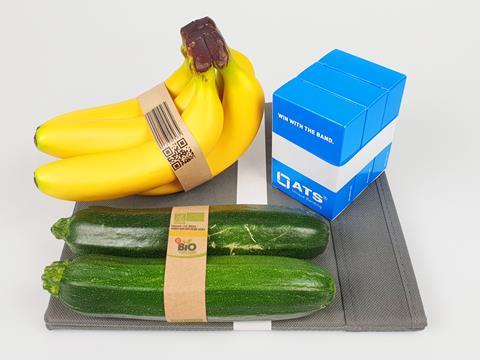
At a time of increased interest in resource-efficient, sustainable solutions to the packaging waste problem – could ultrasonic banding be a potential solution? Thomas Weber, Content Manager at ATS-Tanner Banding Systems AG, tells us more.
Put simply, what is ultrasonic banding?
Simply put, banding is the bundling of products into logistical units with the absolute minimum of packaging material. In contrast to conventional banding machines, however, the ends of the bands in ultrasonic banding are not sealed with heat but with ultrasound.
In your view, how does it perform from a sustainability point of view when compared with alternatives?
Ultrasonic welding is exceptionally energy efficient because it delivers energy directly to the materials being welded instead of transferring it in the form of heat energy. It uses sound waves to compress and weld the materials together instead of heating them.
As a result, less energy is needed to perform the welding and there is also less heat loss. There is also no risk of thermal damage to the materials, and there is no need to spend time and energy cooling them down.
Here’s an example: Compared to a conventional hood shrink machine, an ultrasonic banding machine requires about 98% less energy. In addition, there is the replacement of plastic with paper and significantly less material consumption and waste.
And what are your thoughts on how it compares with alternatives in terms of functionality and performance?
When it comes to simultaneous bundling and labeling, a banding machine with an integrated thermal transfer printer is functionally superior to many other solutions. For example, there is no need for additional labeling. This means not only fewer work steps, but also less material usage, fewer machines, less risk of downtime, etc.
In terms of performance, banding is on par with other technologies. There are numerous large customers who have integrated ATS banding systems into their high-performance production lines - precisely because they are so efficient and reliable.
Of course, banding also has its limits. There are bulky products that simply cannot be banded stably. Whereby the limits here are usually further out than is generally assumed.

What has feedback from your customers on this innovation been like? What do they say they like most about ultrasonic banding?
Our customers are enthusiastic about ultrasonic banding because, on the one hand, it saves packaging material, energy, and thus costs, and on the other hand, it provides customers with positive unpacking experiences.
For example, the sealing force can be adjusted: light sealing force for easy opening and strong sealing force if the bands are to assume a security function and protect against unintentional opening. The same applies to the band tension: this is infinitely adjustable from very soft to very strong and ensures in any case that the banded products are not damaged, but that the bands still hold securely. And, of course, this is always done without the use of adhesives.
Our customers also appreciate the fact that ultrasonic banding machines are extremely durable and reliable and rarely require maintenance. Ultrasonic banding machines do not require any warm-up time because they are ready for operation immediately.
Furthermore, banding is extremely flexible: from the variety of banding materials that can be used, to different product sizes and textures, to use as a stand-alone machine or in fully automated production lines.
What would you say to someone who is considering transitioning to ultrasonic banding? What would your pitch to them be?
Ultrasonic banding is a real problem solver. You achieve your sustainability goals faster, you save packaging material, reduce energy consumption and energy costs, automate packaging processes, and replace several machines with one, thanks to high flexibility - and you upgrade your products to premium products.
But best of all, you make your customers smile because bands are extremely user-friendly in every way. Remember: the design of the packaging has a significant impact on the purchase decision at the point of sale. The customer perceives the product and the packaging as one unit.

















No comments yet